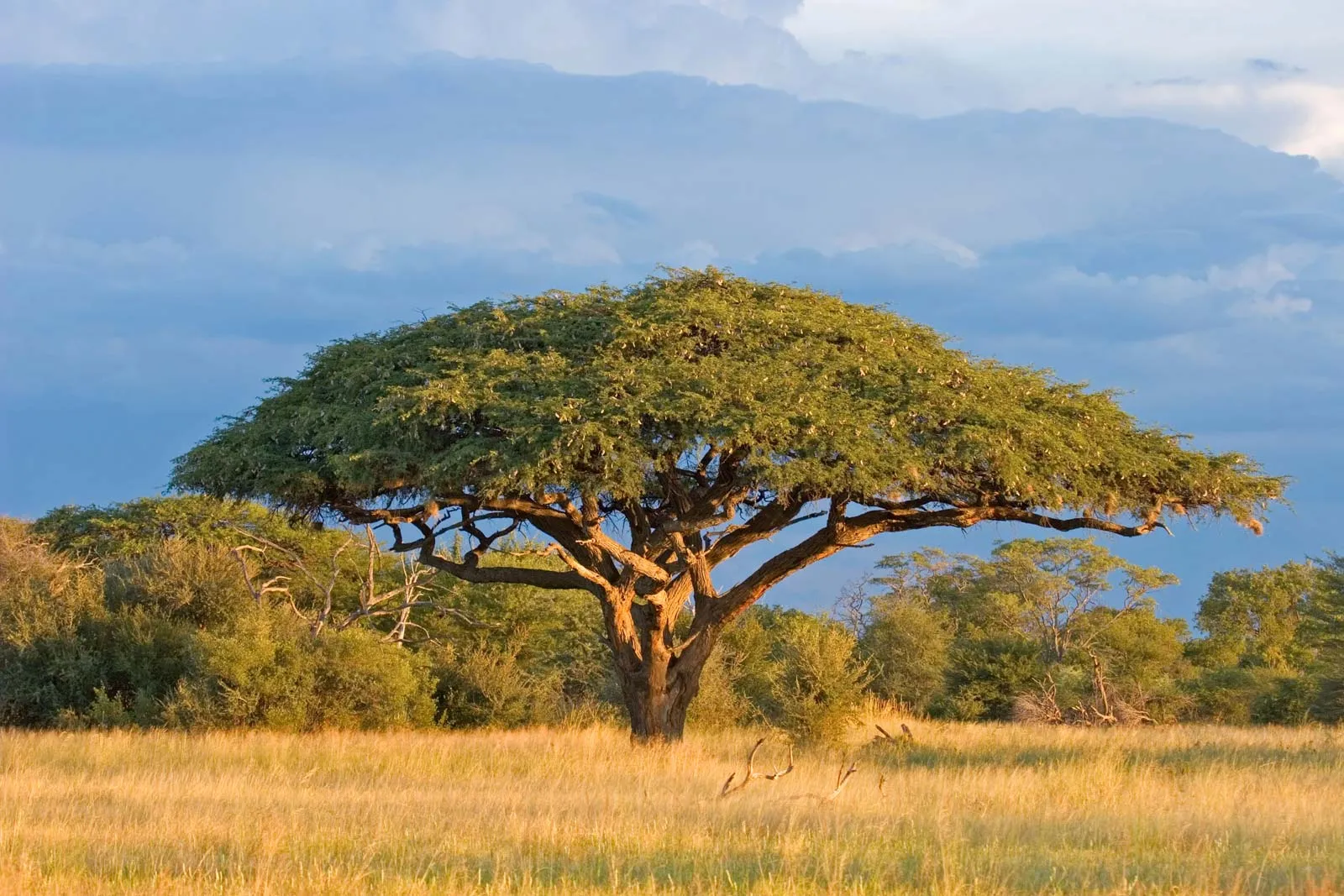
The acacia tree, with its distinctive flat-topped crown, stands as a symbol of resilience and adaptability in the vast African savannas. This iconic tree, which has become synonymous with the African landscape, is celebrated for its remarkable ability to thrive in some of the harshest environments on Earth.
Commonly found across the savannas of East and Southern Africa, the acacia tree is a crucial component of the ecosystem, providing shelter and food for a variety of wildlife. Its wide, umbrella-like canopy offers shade and respite from the scorching sun, creating a microhabitat that supports a diverse range of species.
The acacia tree’s resilience is evident in its ability to withstand prolonged periods of drought. Its deep root system allows it to access water far below the surface, ensuring its survival even when surface water is scarce. Additionally, its thorny branches serve as a defense mechanism against herbivores, protecting the tree from being overgrazed.
One of the most fascinating aspects of the acacia tree is its symbiotic relationship with ants. Certain species of acacia have hollow thorns that provide a home for ants. In return, the ants defend the tree from herbivores and even clear away competing vegetation, ensuring the acacia has enough space and resources to grow.
Beyond its ecological importance, the acacia tree holds significant cultural value for many African communities. It is often used in traditional medicine, with various parts of the tree believed to have healing properties. The wood of the acacia tree is also prized for its durability and is used in the construction of furniture and tools.
However, despite its resilience, the acacia tree faces threats from climate change and human activities. Changes in rainfall patterns and increasing temperatures pose challenges to its survival. Additionally, land clearing for agriculture and urban development has led to the loss of acacia habitats.
Conservation efforts are underway to protect these iconic trees and the ecosystems they support. Initiatives include the establishment of protected areas, sustainable land management practices, and community-based conservation programs that involve local populations in the preservation of their natural heritage.
As a symbol of strength and endurance, the acacia tree continues to inspire awe and admiration. Its presence in the African savannas is a testament to the beauty and resilience of nature, reminding us of the importance of preserving these unique landscapes for future generations.
